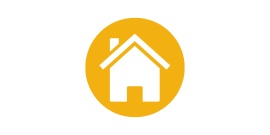Farm Insurance FAQ
What does farm insurance typically cover in Saskatchewan?
+
Farm insurance in Saskatchewan provides protection tailored to the unique risks that Prairie farmers face. At its core, a typical farm policy can include coverage for farm dwellings, outbuildings, machinery, equipment, livestock, and crops.
Beyond these physical assets, farm insurance extends to liability protection, safeguarding you if someone is injured on your property or if your farming operations accidentally cause damage to others’ property.
How is hail insurance different from regular crop insurance?
+
Hail insurance and regular crop insurance serve complementary but distinct purposes in protecting your farm’s financial stability. Hail insurance specifically covers damage to crops caused by hail events. It’s designed to compensate for the direct physical damage and yield loss resulting exclusively from hail strikes.
In contrast, regular crop insurance offers broader protection against multiple perils including drought, excessive moisture, frost, plant disease, and insect infestations.
What steps should I take if my crops are damaged by weather events?
+
The critical first step is submitting a written Notice of Loss within 72 hours of the weather event. Unlike some other insurance claims, crop damage notices cannot be accepted by telephone, so written documentation is imperative.
While waiting for an adjuster, document the damage thoroughly by taking clear, dated photographs from multiple angles and locations throughout the affected fields.
Resist the urge to destroy or work damaged crops before an assessment occurs, as this could complicate the claims process.
Do I need farm insurance if I only have a small hobby farm or acreage?
+
Even small hobby farms and acreages can benefit significantly from specialized farm insurance. Standard homeowners insurance typically isn’t designed to address the unique risks associated with even modest agricultural activities. For instance, if you rent out portions of your land to local farmers, raise a few livestock animals, or use specialized equipment for managing your property, these activities create exposure that homeowners policies simply don’t adequately cover.
It’s important to understand that hobby farm insurance isn’t just for operations with livestock. The coverage extends to machinery, outbuildings, equipment, and even small-scale crop outputs and inputs.
How is farm liability coverage different from personal liability insurance?
+
Farm liability insurance extends far beyond the scope of personal liability coverage, addressing the complex risks inherent to agricultural operations. While personal liability (typically included in homeowners insurance) primarily covers incidents like a visitor slipping on your sidewalk, farm liability addresses a much broader range of scenarios unique to farming activities.
Farm liability protection typically covers situations such as: damage caused by your livestock if they escape and damage neighboring property; and injuries to visitors caused by equipment or animals.
Additionally, farm liability can include environmental liability protection, covering costs associated with accidental spills of fuel, chemicals, or waste. Given the significant financial consequences that could result from these farming-specific risks, adequate farm liability coverage represents an essential safeguard for your agricultural operation’s long-term viability, protecting not just your farm assets but your family’s financial future as well.
What factors affect the cost of farm insurance in Saskatchewan?
+
Farms in areas with higher exposure to severe weather events like hail, frequent drought conditions, or flooding may face higher premiums. Similarly, your farm’s proximity to fire services can impact rates, as response time directly affects potential damage limitation.
The size and diversity of your operation also influence pricing. Larger farms with more buildings, equipment, and livestock naturally require more coverage. The type of farming you conduct matters too, livestock operations face different risks than grain farms, and specialized crops may have different risk profiles than traditional crops. Having fewer claims typically resulting in more favorable rates.
Higher coverage limits and lower deductibles provide greater protection but at increased cost.
Should I insure my farm equipment for replacement cost or actual cash value?
+
Replacement cost coverage pays to replace damaged equipment with new equivalent models, without deducting for depreciation. This provides the most complete financial protection, ensuring you can replace equipment without significant additional investment, but it typically comes with higher premiums.
Actual cash value coverage factors in depreciation when calculating compensation. While this option offers lower premiums, it could leave you with substantial out-of-pocket costs when replacing older equipment.
Many Saskatchewan farmers choose a strategic approach: insuring newer, high-value equipment at replacement cost while covering older machinery at actual cash value. Some equipment financing agreements often require replacement cost coverage until loans are paid off, so review your loan documents when making these important coverage decisions.
What coverage options are available for livestock producers?
+
Basic livestock coverage typically protects against losses due to fire, lightning, electrocution, drowning, building collapse, and transportation accidents. For more comprehensive protection, many producers opt for additional coverage against mortality from disease, theft, or predator attacks.
For breeding stock, specialized coverage is available to protect against reproductive failure or complications.
How do I determine the right amount of crop insurance coverage?
+
Determining the optimal crop insurance coverage requires balancing protection against potential losses with premium costs. As a starting point, we recommend calculating your production costs per acre, including inputs like seed, fertilizer, chemicals, and labour. This baseline ensures that, at a minimum, your coverage can help recover your investment if crop failure occurs.
Next, consider your historical yields and their variability. Saskatchewan’s challenging climate means that yield fluctuations are common, so examining several years of production data helps establish realistic coverage expectations. Many farmers choose coverage levels that protect 70-85% of their expected revenue, finding this range balances premium costs with meaningful protection.
Market volatility adds another dimension to consider. In years of price fluctuations, revenue-based protection that accounts for both yield and price changes may provide more comprehensive security than yield-based coverage alone. Remember that insurance limits should be sufficient to compensate for actual revenue loss, not necessarily exceed the crop’s value.
Does farm insurance cover damage to buildings from extreme weather events?
+
Yes, comprehensive farm insurance typically covers damage to buildings from most extreme weather events, providing crucial protection against Saskatchewan’s sometimes harsh climate conditions. Standard farm property coverage generally includes protection against damage from windstorms, hail, and lightning.
However, it’s important to note that specific weather-related perils, such as floods, may be excluded. Coverage may be available to purchase as an addition to your policy.
The age and condition of farm buildings can also affect coverage. Older structures or those not maintained to current building standards may have limited coverage or higher deductibles for weather-related claims.
How can I reduce my farm insurance premiums while maintaining adequate coverage?
+
Consider adjusting your deductibles; opting for higher deductibles on property coverage can significantly reduce premiums, though it means assuming more financial responsibility for smaller claims. Many successful Saskatchewan farmers essentially self-insure for minor losses while maintaining coverage for potentially catastrophic events.
Maintaining detailed inventory records of equipment, livestock, and stored crops (complete with photographs and documentation of value) can streamline the claims process.
Additionally, consider reviewing coverage on older equipment. As machinery ages, it may make financial sense to reduce coverage to actual cash value rather than replacement cost.
This page is a general guide and for informational purposes only. Refer to your insurance policy for conditions, definitions, or exclusions. In case of discrepancy, the policy wording documentation prevails.










